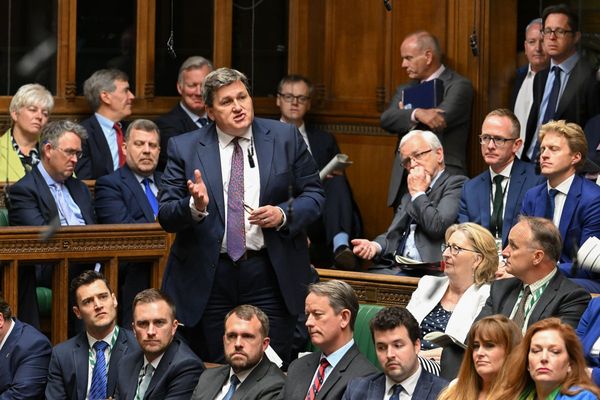One of the most bizarre aspects of the United States presidential election has been how difficult it’s been to determine the truth — particularly due to Republican Donald Trump’s candidacy — and if the truth even matters.
As former Trump advisor Anthony Scaramucci once noted about the former president: “Don’t take him literally, take him symbolically.” This advice wasn’t very helpful.
The difficulty in determining what is true is symptomatic of the high levels of uncertainty that Canadian policymakers are confronted with regularly in their dealings with their American counterparts.
Voters in the most powerful nation on Earth — and Canada’s neighbour and largest trading partner — are choosing between two starkly different choices on the ballot, and Canada must be attentive and adaptive across a number of policy areas.
Three-part process
Scenario planning provides an effective way to address such high levels of uncertainty. The method can generate difficult and radically different descriptions of the future by way of challenging participants, requiring imaginative interventions and overcoming stability and optimism biases.
At the MacEachen Institute for Public Policy and Governance at Dalhousie University, our team used this method extensively throughout the COVID-19 pandemic, including with members of the tourism industry in early 2021. The method proved to be an effective tool for these organizations in planning for the 2021 tourism season in light of the uncertainty posed by COVID-19.
There are typically three parts to the approach, divided by sessions. The first session establishes the goals the participants wish to achieve in light of their unique challenges and timelines. Goals vary but usually address some aspect of the medium-term success of the organization. Timelines can be anything from a few months down the road to decades from now.
Motivating factors
The group then discusses drivers, which are highly impactful forces beyond their immediate control that will shape the scenarios. Two drivers are selected, often based on supply-and-demand concepts.
During the second session, participants describe four scenarios based on the two drivers, answering questions that include:
What does this scenario look like?
How would we arrive at this scenario?
What are the underlying causes of the scenario?
What are the critical failures and opportunities in this scenario?
Finally, the group names the scenario. The four scenarios are deliberately intended to be different and extreme in order to push people beyond their comfort zones.
At the third session, participants establish how they’re going to judge policies and operational changes knowing that any one of the four scenarios could materialize.
Trade, economy
In terms of scenario planning for the Canada-U.S. relationship, Canadian policymakers could consider U.S. trade policies as the first driver (liberal trade policies vs. protectionist policies) and the state of the American economy as the second driver (it either booms or it sinks into a deep recession).
Organized as a two-by-two matrix, policymakers can explore four plausible future scenarios: either liberal or protectionist trade policies, during either an economic boom or a recession.
Within these four scenarios, policymakers can develop criteria by which to evaluate Canadian policies knowing that any one of these four scenarios could materialize.
There are important things to consider at the design stage.
To start, it can be time-consuming to organize and execute the sessions. You can run remarkably simple and helpful sessions in a day, or extremely involved ones over several months.
The number of participants is flexible. Usually it involves a small to medium-sized group, but individuals can use the two-by-two matrix to think through problems over lunch.
Who’s there matters. We tend to invite people who represent different parts of an organization or sector. That provides legitimacy to the process and satisfies a sense of fair play, and this approach can also help participants accept the conclusions and communicate them broadly.
At the same time, having representatives from each part of the organization can lead to turf wars. It can serve to reinforce existing institutional arrangements rather than challenge, change and in some cases abolish them. Bringing in guest speakers to share best practices from other jurisdictions can help to discuss difficult issues.

Embracing diversity
Scenario planning exercises also favour elite groups — experts, company executives and clever high flyers who are skilled at imaginative thinking. Turning to these elite groups can be at odds with equity, diversity, inclusion and accessibility principles.
Diverse sources of information can challenge participants to think differently and also help participants to understand the impacts of scenarios to different communities.
Participants also need to be able to speak frankly. Values may differ, and attempts by participants to avoid saying anything controversial can crowd out more nuanced thoughts.
Generally, egalitarian dynamics lead to consensus-seeking solutions. But this doesn’t always result in more radical transformations. In some respects, the four possible scenarios compel participants to consider quite different views, which can be helpful.

All of this makes discussing how to judge new programs at the third session more challenging and important.
One way to address these challenges is to have a broad way to discuss and evaluate each strategy. Typically, we examine different parts of the strategy — how an organization gathers information, sets standards and changes behaviour internally — and different criteria by which to judge the strategies (efficiency, fairness and accountability and stability and learning).
An experienced moderator with some professional distance from the group can help to keep the conversation on time, on subject and challenge participants when conventional wisdom starts to creep in.
Public agencies are premised on a command-and-control dynamic, but policymakers increasingly need tools and skills that allow them to anticipate, address and communicate risks over which they have limited control.
The U.S. election and its aftermath in the weeks and months to come are a salient and consequential example. Scenario planning allows policymakers to challenge their assumptions and have difficult conversations in light of quickly changing events in order to seize opportunities and reduce vulnerabilities.
Kevin Quigley received funding from the Atlantic Canada Opportunities Agency, Change Lab Action Research Network, and SSHRC for the work discussed in this article.
This article was originally published on The Conversation. Read the original article.







